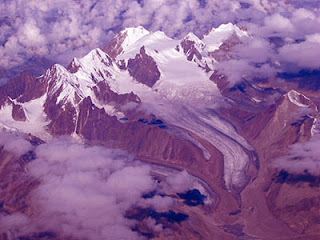Himalayan Glaciers do not melt as fast as previously thought. The results indicate that the rate of melting experienced by the great Asian mountain range is similar to the rest of the world. This contradicts the predictions severe various agencies had made about the fate of eternal ice of the roof of the world.
In 2007, Intergovernmental Panel on Climate Change (IPCC) said in its Fourth Assessment Report on Climate Change that the Himalayan glaciers could melt entirely in 2035. Later, the IPCC acknowledged that they were wrong and had included in their report that Himalayas will not disappear in 2035.
It should be borne in mind that millions of people in the Indian subcontinent depends on large rivers like the Ganges, Indus and Brahmaputra which fed directly from the frozen roof of the world. Scientists believe that although the decrease of ice is not as rapid as it was called remains a concern.
Do not believe in the immediate term there will be lack of water in large river, but due to changes in glaciers and summer thaw may be a lack or excess of water in some valleys.


No comments:
Post a Comment